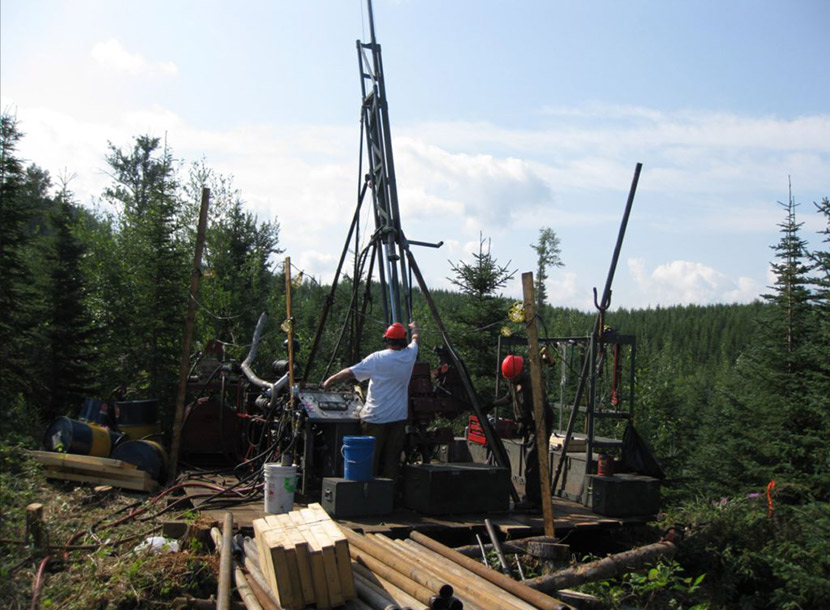JV Article: Defense Metals’ Wicheeda rare earths project poised to become the Next REE producer in North America


When Defense Metals (TSXV: DEFN) acquired 100% ownership of its flagship Wicheeda rare earth elements deposit in British Columbia this month, it was the latest in a series of milestones the company marked over the past year.
Drilling has intersected visible rare earth element (REE) mineralization in dolomite-carbonatite rocks in all holes, and the Preliminary Economic Assessment (PEA), filed in January, indicates the project has an after-tax net present value with an 8% discount of $404 million, and an internal rate of return of 18%.
Last year, Defense Metals entered into an agreement with Sinosteel Corporation for testwork and concentrator design research cooperation, and an investigation into the establishment of an on-site large-scale demo plant at Wicheeda to assess the economic and technical feasibility of full-scale mine development.
The company reports having a Mineral Resource Estimate comprising 5.0 million tonnes of indicated resource, averaging 2.95% TREO and 29.5 million tonnes of inferred resources, averaging 1.83% TREO, at a cut-off grade of 0.5% TREO. The current resource represents a 36% increase on a contained metal basis in comparison to the prior 2020 resource estimates, due to the estimation of additional economically significant medium and heavy REE’s and a lower cut-off grade established based on PEA economic assumptions.
The Wicheeda property is located close to infrastructure about 80 kilometres (49 miles) northeast of Prince George. The PEA contemplates a 1.8 Mtpa (million tonnes per year) mill throughput open pit mining operation with 1.75:1 (waste:mill feed) strip ratio over a 19 year mine (project) life that includes 3 years of construction, and early revenue generation via phased open pit development. Phase 1 initial pit strip ratio of 0.63:1 (waste:mill feed) yields rapid access to higher grade surface mineralization.
Defense Metals aims to produce an average of 25,000 tonnes of rare earth oxides (REO) per year, approximately 10% of the world’s current production.
Defense Metals President, Dr. Luisa Moreno, is also a Physics Engineer, industry-known expert analyst and strategic metals consultant to federal and provincial governments, tasked with mineral development and supply chain development.
Moreno has assisted both public and private companies and institutional investors with economic and technical assessments of mineral assets and technologies.
Moreno said the project ticks all the boxes for economic success and delivery to markets — mineralogy, processing and infrastructure — as rare earths are known to be difficult to extract and expensive to process.
“One of the advantages for Defense Metals is the fact that they are able to produce a high-grade flotation concentrate because of favorable mineralogy — deposits that are coarse grained like Wicheeda, and with rare earths minerals that have high total rare earths content, like bastnasite and monazite, have a better chance to produce a high-grade floatation concentrate,” Moreno says.
“If a company cannot produce the high REE grade flotation concentrate from their hard rock deposit, the project economics are often harder.”
The flotation concentrate to be sold in the initial production period will average 43% total rare earth oxides (TREO). The company is planning to build a hydrometallurgical plant to treat the concentrate in the fifth year of mine production.
Defense Metals put in an application to be a preferred vendor under Defense Production Act (DPA). The DPA published a Technology Market Research report last year outlining Defense Metal’s Corporation’s role in the rare earth supply chain.
Viable North American rare earths projects are much needed to establish domestic supply chains for the REEs crucial to electric vehicles, wind generators, medical devices, smart phones, and aerospace and defense applications. The $14 billion a year rare earth magnet market is currently more than 60% controlled by China.
With the PEA forecasting a tenfold increase in EV adoption by 2030, the result, Defense Metals CEO Craig Taylor said, will be a correlating supply deficit of the elements used in magnets, neodymium and praseodymium especially.
“The positive PEA has strengthened Defense Metals’ Wicheeda deposit as a crucial source for the global REE supply chain,” Taylor said.
The preceding Joint-Venture Article is PROMOTED CONTENT sponsored by Defense Metals and produced in cooperation with MINING.com. Visit Defense Metal for more information.
2 Comments
John Balderston
Why are we partnering with the Chinese (Sinosteel) to develop a critical metals mine when the Chinese are already controlling 60% of the REE market?
We should be developing REE metals in Canada in house for strategic reasons alone let alone any other reason.
If we are that stupid we deserve to fall behind in this most critical race for dominance in all the areas where REE metals will influence who will control the future of technology.
Jeff
There is no way Defense will be the next “become the Next REE producer in North America” as they do not have the capabilities to refine their ore. It will take years for them to develop their technology if at all. The MOU with Chinese Sinosteel not only goes against their marketed desire to be serving the Allied Supply Chain but might be cancelled all together due to the recent Chinese legislation on REE’s which includes a ban of technological collaboration with foreign entities.